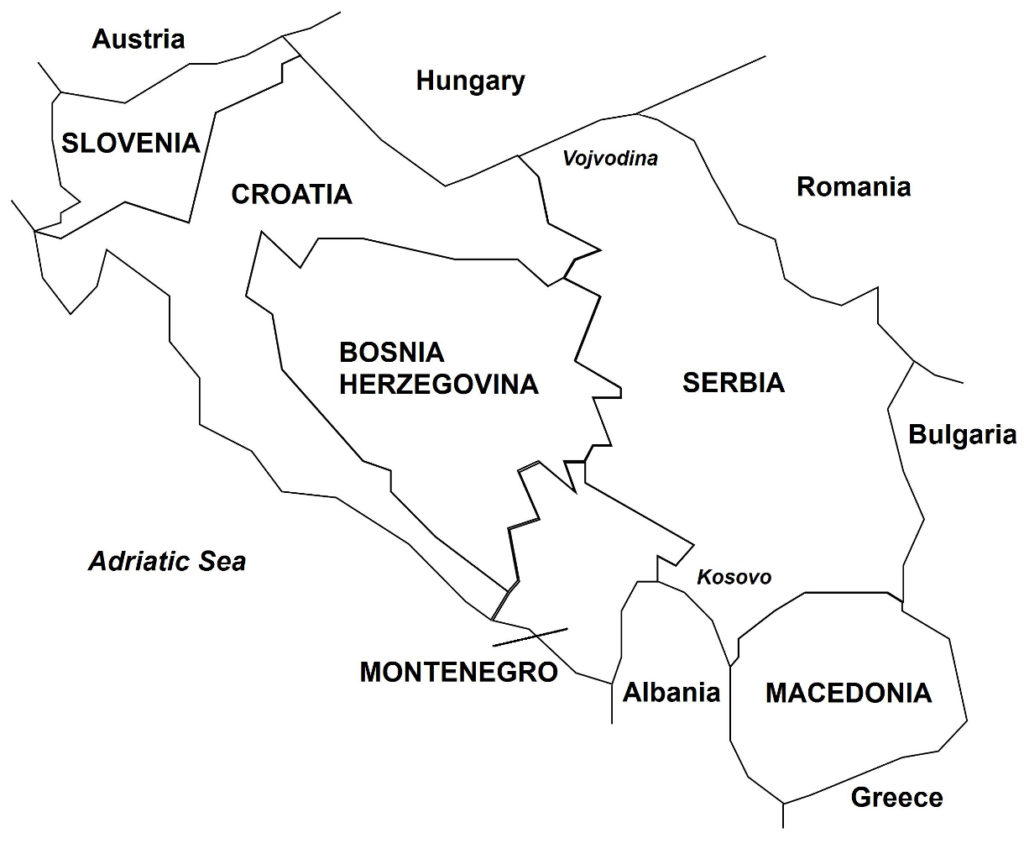On May 1, 1995, the Croatian Army launched a lightning attack on Serb-held Western Slavonia. By the next day, the whole region had fallen to the Croatians, forcing the Serb forces and nearly all the civilian population there to flee to Bosnia-Herzegovina. Then on August 4, the Croatians, supported by Bosnian Army units, attacked northern Dalmatia and Lika. By the fourth day of the attack, Serbian forces had been routed and the Croatian Serb government of Krajina was in total collapse. Some 200,000 ethnic Serb civilians fled the fighting and ended up as refugees.

(Taken from Croatian War of Independence – Wars of the 20th Century – Volume 2)
Background By the late 1980s, Yugoslavia was faced with a major political crisis, as separatist aspirations among its ethnic populations threatened to undermine the country’s integrity (see “Yugoslavia”, separate article). Nationalism particularly was strong in Croatia and Slovenia, the two westernmost and wealthiest Yugoslav republics. In January 1990, delegates from Slovenia and Croatia walked out from an assembly of the League of Communists of Yugoslavia, the country’s communist party, over disagreements with their Serbian counterparts regarding proposed reforms to the party and the central government. Then in the first multi-party elections in Croatia held in April and May 1990, Franjo Tudjman became president after running a campaign that promised greater autonomy for Croatia and a reduced political union with Yugoslavia.
Ethnic Croatians, who comprised 78% of Croatia’s population, overwhelmingly supported Tudjman, because they were concerned that Yugoslavia’s national government gradually had fallen under the control of Serbia, Yugoslavia’s largest and most powerful republic, and led by hard-line President Slobodan Milosevic. In May 1990, a new Croatian Parliament was formed and subsequently prepared a new constitution. The constitution was subsequently passed in December 1990. Then in a referendum held in May 1991 with Croatian Serbs refusing to participate, Croatians voted overwhelmingly in support of independence. On June 25, 1991, Croatia, together with Slovenia, declared independence.
Croatian Serbs (ethnic Serbs who are native to Croatia) numbered nearly 600,000, or 12% of Croatia’s total population, and formed the second largest ethnic group in the republic. As Croatia increasingly drifted toward political separation from Yugoslavia, the Croatian Serbs became alarmed at the thought that the new Croatian government would carry out persecutions, even a genocidal pogrom against Serbs, just as the pro-Nazi ultra-nationalist Croatian Ustashe government had done to the Serbs, Jews, and Gypsies during World War II. As a result, Croatian Serbs began to militarize, with the formation of militias as well as the arrival of armed groups from Serbia.
Croatian Serbs formed a population majority in south-west Croatia (northern Dalmatian and Lika). There, in February 1990, they formed the Serb Democratic Party, which aimed for the political and territorial integration of Serb-dominated lands in Croatia with Serbia and Yugoslavia. They declared that if Croatia wanted to secede from Yugoslavia, they, in turn, should be allowed to separate from Croatia. Serbs also interpreted the change in their status in the new Croatian constitution as diminishing their civil rights. In turn, the Croatian government opposed the Croatian Serb secession and was determined to keep the republic’s territorial integrity.
In July 1990, a Croatian Serb Assembly was formed that called for Serbian sovereignty and autonomy. In December, Croatian Serbs established the SAO Krajina (SAO is the acronym for Serbian Autonomous Oblast) as a separate government from Croatia in the regions of northern Dalmatia and Lika. Croatian Serbs formed a majority population in two other regions in Croatia, which they also transformed into separate political administrations called SAO Western Slavonia, and SAO Eastern Slavonia (officially SAO Eastern Slavonia, Baranja, and Western Syrmia). (Map 17 shows locations in Croatia where ethnic Serbs formed a majority population.) In a referendum held in August 1990 in SAO Krajina, Croatian Serbs voted overwhelmingly (99.7%) for Serbian “sovereignty and autonomy”. Then after a second referendum held in March 1991 where Croatian Serbs voted unanimously (99.8%) to merge SAO Krajina with Serbia, the Krajina government declared that “… SAO Krajina is a constitutive part of the unified state territory of the Republic of Serbia”.
